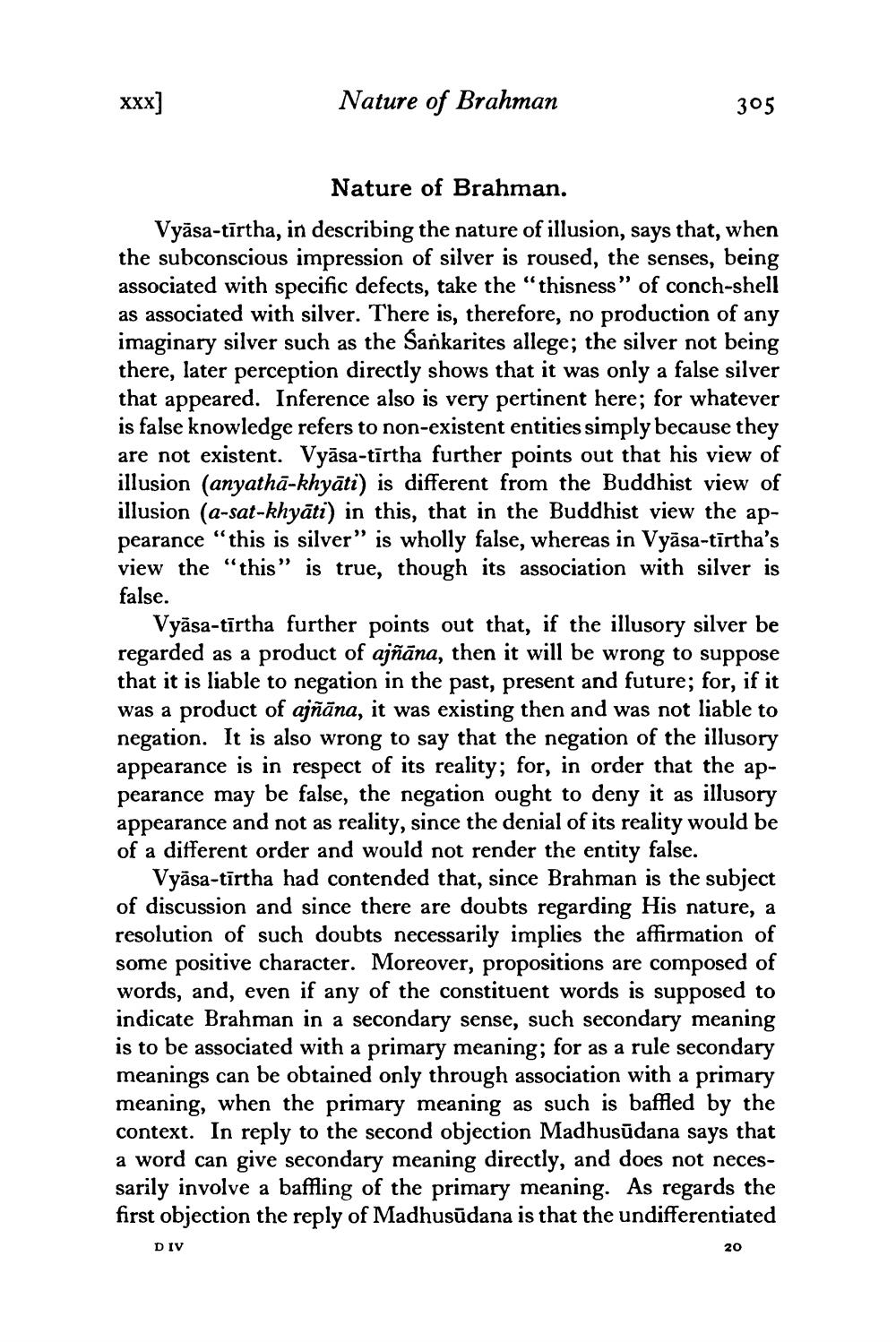________________
xxx]
Nature of Brahman
305
Nature of Brahman. Vyāsa-tīrtha, in describing the nature of illusion, says that, when the subconscious impression of silver is roused, the senses, being associated with specific defects, take the "thisness” of conch-shell as associated with silver. There is, therefore, no production of any imaginary silver such as the Sankarites allege; the silver not being there, later perception directly shows that it was only a false silver that appeared. Inference also is very pertinent here; for whatever is false knowledge refers to non-existent entities simply because they are not existent. Vyāsa-tīrtha further points out that his view of illusion (anyatha-khyāti) is different from the Buddhist view of illusion (a-sat-khyāti) in this, that in the Buddhist view the appearance “this is silver” is wholly false, whereas in Vyāsa-tīrtha's view the "this" is true, though its association with silver is false.
Vyāsa-tīrtha further points out that, if the illusory silver be regarded as a product of ajñāna, then it will be wrong to suppose that it is liable to negation in the past, present and future; for, if it was a product of ajñāna, it was existing then and was not liable to negation. It is also wrong to say that the negation of the illusory appearance is in respect of its reality; for, in order that the appearance may be false, the negation ought to deny it as illusory appearance and not as reality, since the denial of its reality would be of a different order and would not render the entity false.
Vyāsa-tīrtha had contended that, since Brahman is the subject of discussion and since there are doubts regarding His nature, a resolution of such doubts necessarily implies the affirmation of some positive character. Moreover, propositions are composed of words, and, even if any of the constituent words is supposed to indicate Brahman in a secondary sense, such secondary meaning is to be associated with a primary meaning; for as a rule secondary meanings can be obtained only through association with a primary meaning, when the primary meaning as such is baffled by the context. In reply to the second objection Madhusūdana says that a word can give secondary meaning directly, and does not necessarily involve a baffling of the primary meaning. As regards the first objection the reply of Madhusūdana is that the undifferentiated
DIV
20




